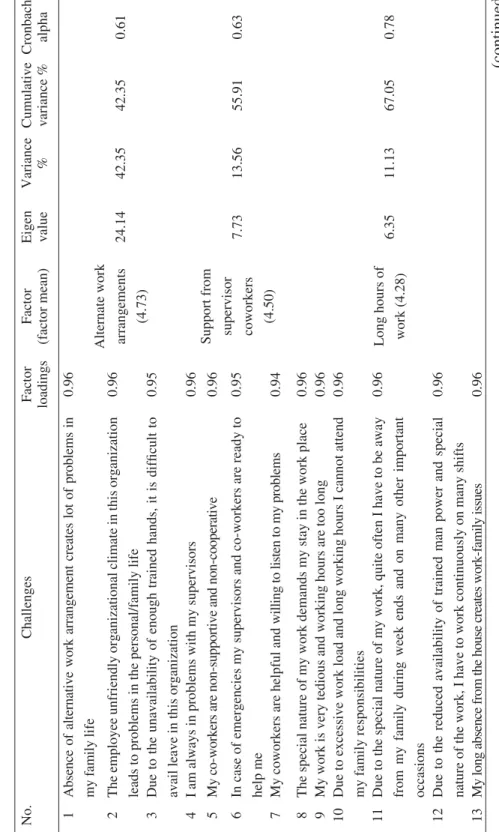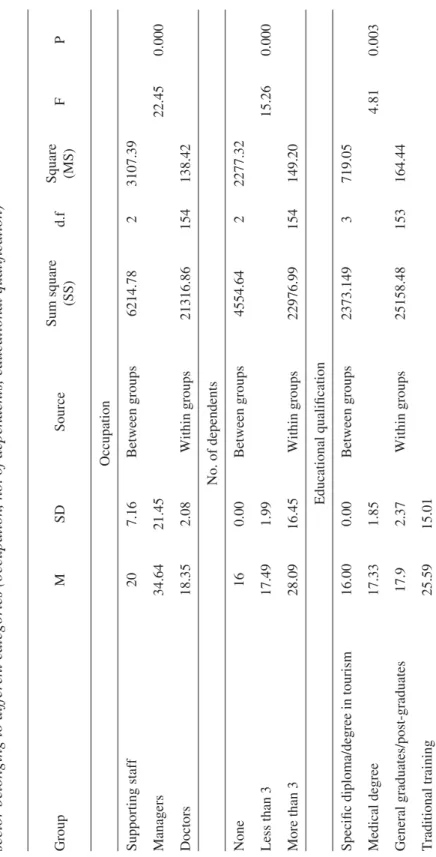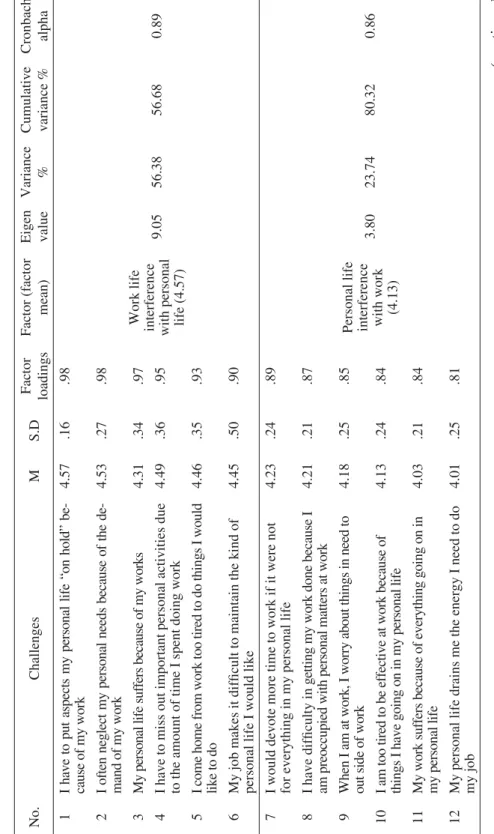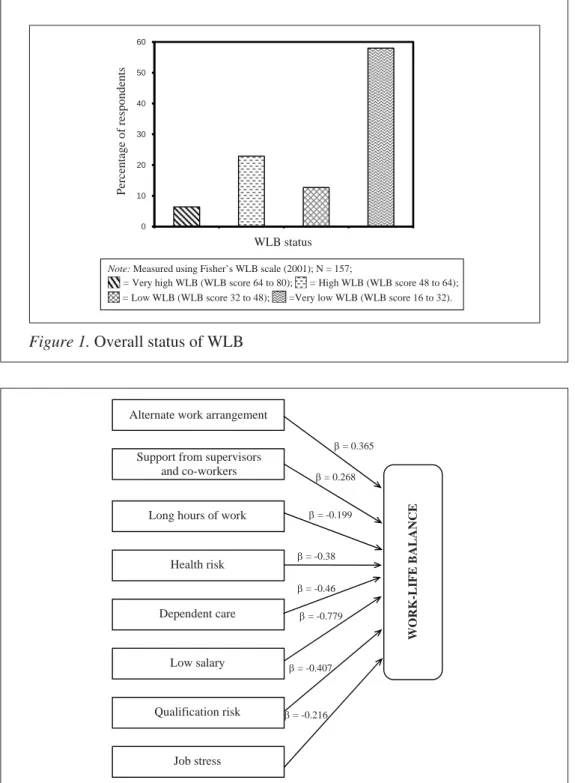While medical tourism offers vibrant business opportunities in the service sector, its efficient management and successful operation mainly depend on the quality of highly skilled human capital. This finding should be seen in light of the fact that there is a shortage of skilled labor in this sector and that work-family conflict is considered an antecedent of employees' intention to leave (Netemeyer, Brashear-Alegandro & Boles, 2004 ). . This is especially important in view of the changes taking place in the work environment due to globalization, changes in work patterns and technological advances (Caughlan, 2000; Fisher, 2000).
A critical analysis of the literature reveals that although there are studies regarding human resources in the tourism and hospitality industry (Deery & Shaw, 1999; Pizam & Thornburg, 2000; Lam, Prine & Baum, 2003; Karatepe & Sokemen, 2006; Baum, Hearns & Devine, 2007), studies related to the medical tourism sector are sparse (Connel, 2006; Srivastava, 2006) and the studies of the staff working in indigenous health management practices associated with the medical tourism sector are extremely rare. Therefore, there is a growing need to conduct more research on WLB issues for employees associated with the indigenous health management practices in the tourism sector of the hospitality industry in developing countries such as India. However, as a result of the major changes that have occurred both in the composition of the workforce and in the nature of work, the integration of work and other life (family) responsibilities is becoming increasingly difficult (Barnett, 1998; Edwards & Rothbard, 2000). .
As there is a shortage of skilled labor in the domestic health management sector, this could pose a major challenge to the overall development of the sector in general and WLB employees in particular. Barnes (1996) and Levin-Epstein (2006) also reported negative impacts of WLB absenteeism on employee health. They believe that child care workers face a growing tension between work and non-work.
Even though most of the employees will have to make care decisions during their careers, little attention has been paid to its impact on WLB, especially in the case of indigenous health management sector.
Research method
On the other hand, higher levels of work-to-family conflict have been reported where there is a lack of social support (Greenhaus & Beutell, 1985). Bilingual open-ended questions (English and Malayalam) and semi-structured interview format were designed to explore the various dimensions (factors) that pose challenges to employees' WLB. In order to increase the validity and reliability of the instrument as well as to ensure its appropriateness, the statements were subjected to two phases of pilot testing conducted with 18 people each, consisting of human resource professionals, academic experts and progressive employees of the local management sector. of health.
The second part, which originally contained 57 statements, was designed to measure WLB challenges among employees in the Indigenous health management sector. Overall WLB status, as measured by Fisher's (2002) WLB scale, was taken as the dependent variable for correlation and regression analysis to determine predictors (core dimensions) of WLB challenges. The KMO criterion for sampling adequacy and Bartlett's test of sphericity of the new instrument were also performed to check the correctness of the data.
One-way analysis of variance (ANOVA) (Table 4) was performed to examine whether there is any significant difference in WLB status among local health management sector workers based on their occupation, number of dependents and education qualifications. Independent sample 't' test (Table 5) was used to assess whether there is any significant difference in WLB between respondents based on gender and marital status.
Findings
Similarly, supervisor and co-worker support (r = 0.99) was also found to increase employees' WLB. Thus, as alternative work arrangements as well as support from supervisors and co-workers increases, WLB also increases as hypothesized in H7 and H9. It is therefore evident that as dependent care increases, WLB decreases showing its negative relationship as hypothesized in H5.
On the other hand, alternative work arrangements and support from superiors and co-workers are positive predictors of WLB.
Discussion
Of these two situations, only the fl extime concept can be accommodated in the present case (provided manpower is available) since the health care facilities are permanently installed in a particular location. In other words, only 50% (of the time) of flexible work arrangements are applicable in the field of local health management, but also with limitations. Although monetary compensation can help with WLB by enabling the employee to earn enough money through overtime work, the respondents of this study consider provisions for flexible/alternative work arrangements to be key in trying to help employees manage competing work and family. domains.
However, this acts as a major handicap in the field of indigenous medical tourism sector of Kerala. In the present study, it is also found that support from supervisors and co-workers has a strong positive correlation with WLB (Table 6). In the current study, it is also found that support from supervisors and co-workers is a positive predictor of WLB (Table 7).
However, in the case of the indigenous health management practices, rather than employing fewer people, the situation of long hours of work is basically due to the less availability of qualified manpower. Many respondents in the current study also worked together for months continuously in the workplace, which is away from their family and friends. The same result is expected in the case of highly irregular working time schedule as seen in the present study.
Care needs are different for children and the elderly. In this study, employees with older dependents privately admitted to experiencing greater work-life imbalance and mental stress. In the absence of alternative work arrangements and co-worker support, dependent caregiving becomes more complex than this study demonstrates.
The WLB in the present study must also be analyzed in light of the report by Kossek and Ozeki (1999) that an employee's work and family climate can directly and indirectly influence the consequences of caregiving decisions. This fact is reflected in the results of the correlation and regression analyses, thereby making low salary a negative predictor of WLB. In the current study, qualification risk indicates the situation where subordinates or co-workers are underqualified and have less expertise in the field.
Managerial implications
Even under this situation, due to the highly specialized nature of the work and limited job opportunities, the opt-out potential for employees is also very limited (McKey (2001). While qualification refers to abilities and skills in handling known and structured demands, the concept of competence refers to the ability to handle unexpected changes and unknown situations.In such a situation the supervisors or employees have to work towards training or supervising the former and at the same time the underqualified hands themselves.will have doubts about the treatment procedures and would lead to their lowered self-confidence and self-esteem.
All of these activities can be counterproductive in terms of WLB (Tables 7, 8) thus making qualification risk a negative predictor of WLB.
Conclusion
Role stress, work-family conflict, and emotional exhaustion: Interrelationships and effects on some work-related outcomes. The role of social support in the stressor-strain relationship: an investigation of work-family conflict. Medical Tourism in Kerala – Challenges and Scope, Proceedings of Conference on Tourism in India – Challenges Ahead, 15- 17 May 2008, IIM Kozhikode, India Work/Family Boundary Theory – A New Theory of Work-Life Balance.
Relationship of work-family conflict to health outcomes: a four-year longitudinal study of employed parents. The effects of work role and family role variables on psychological and behavioral outcomes of frontline workers. The organizational stratification of opportunities for work-life balance that addresses issues of equality and social justice in the workplace.
The influence of work-family culture and workplace relations on work-family interference: A multilevel model. Influencers and their role in determining the work-life balance of employees working in the information technology sector. An empirical analysis of the impact of various dimensions of work-life balance on organizational commitment among service sector employees in India.
A study of work-family conflict in the Irish hotel sector, paper presented at the Conference of European Academy of Management (EURAN), 4-7 May, Munich. An investigation of the moderating effects of organizational commitment on the relationships between work-family conflict and job satisfaction among hospitality workers in India. A cross-national model of work-related outcomes of work role and family role variables: a retail sales context.
When flexibility helps: Another look at the availability of flexible work arrangements and work-family conflict. The impact of supportive work-family variables on work-family conflict and strain: a control perspective. Understanding work diversity in the 21st century and its impact on the field of work-family studies.
Sweet (Eds.) The work and family handbook: multi-disciplinary perspectives and approaches, (17-40), N.J: Lawrence Erlbaum Associates,. List of deleted items from work-life challenges measure after factor analysis with varimax rotation and reliability test (N = 157). Independent sample 't' test showing significant variations in the work-life balance of Indigenous Health Management Department employees based on marital status and gender.
Summary of the linear regression for factors (work-life balance challenges) predicting work-life balance.



